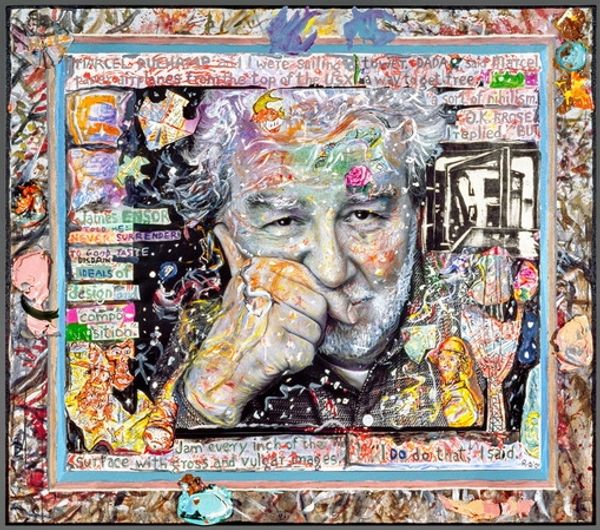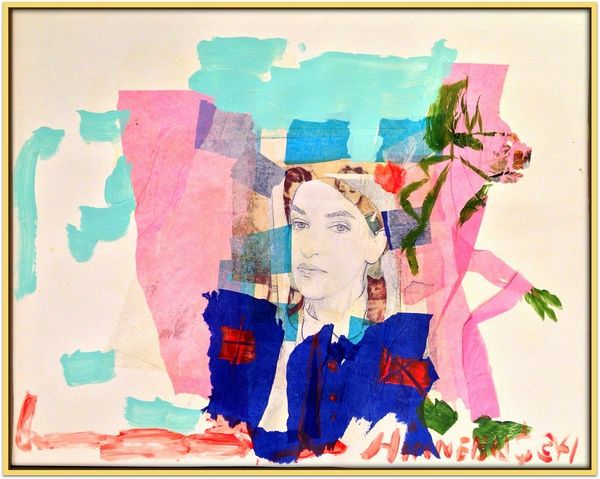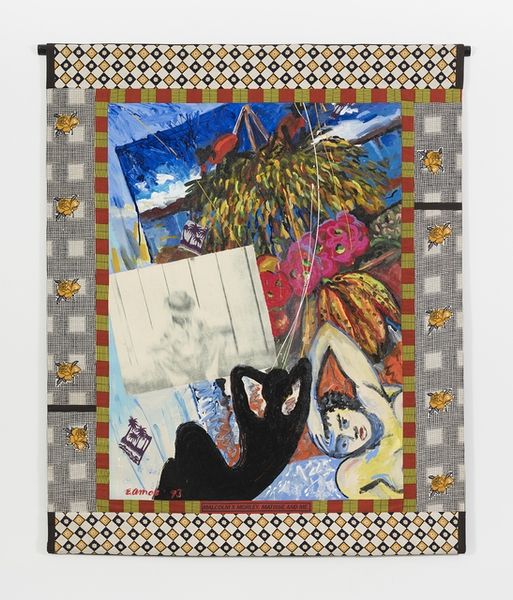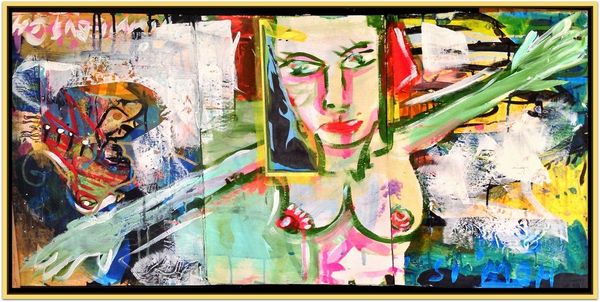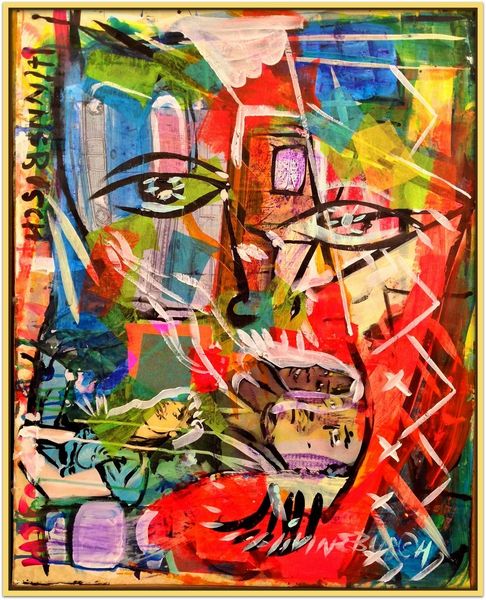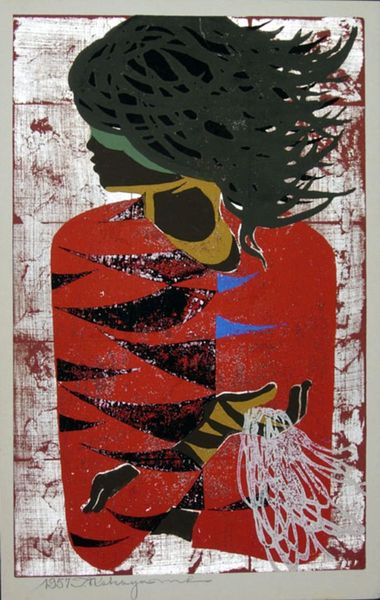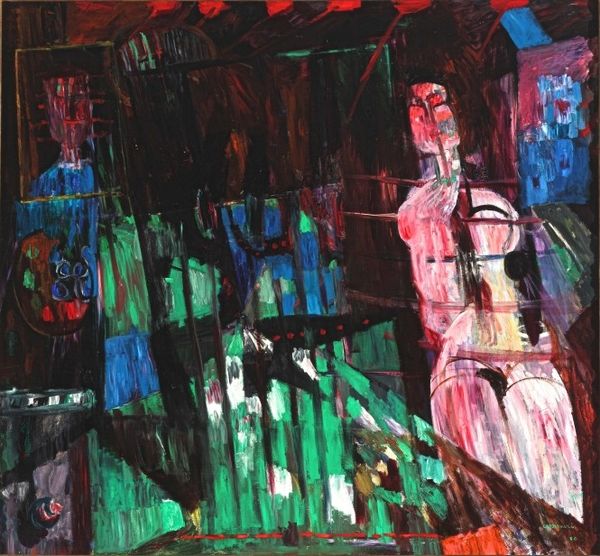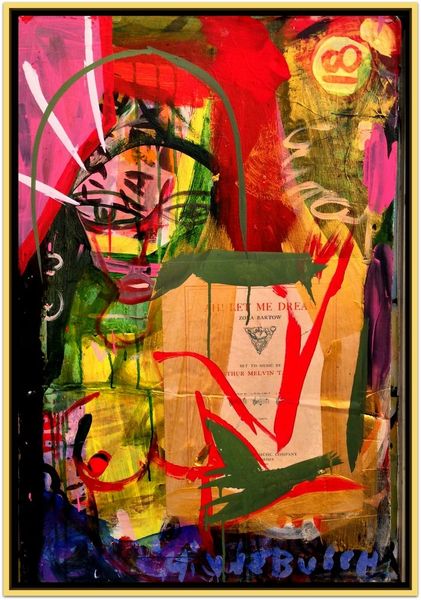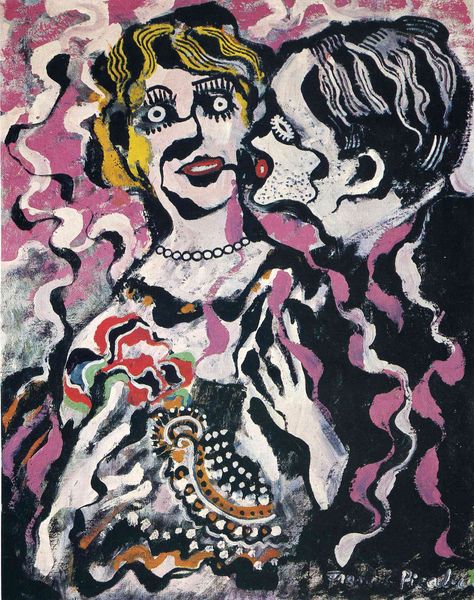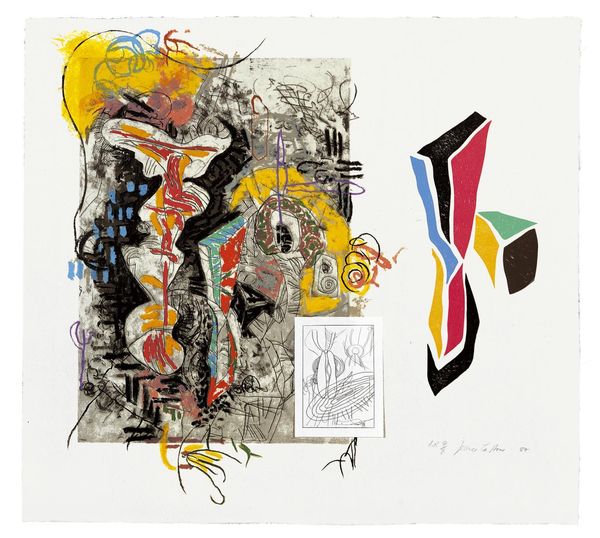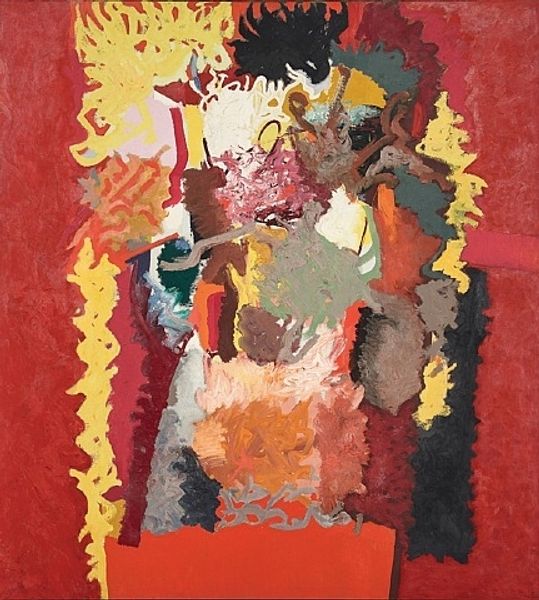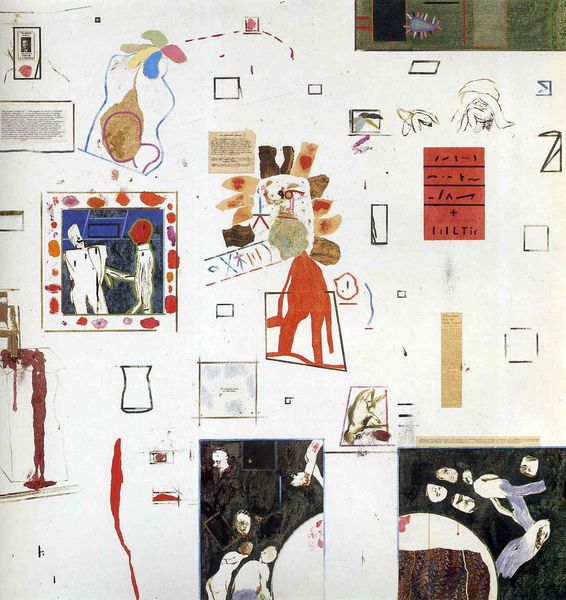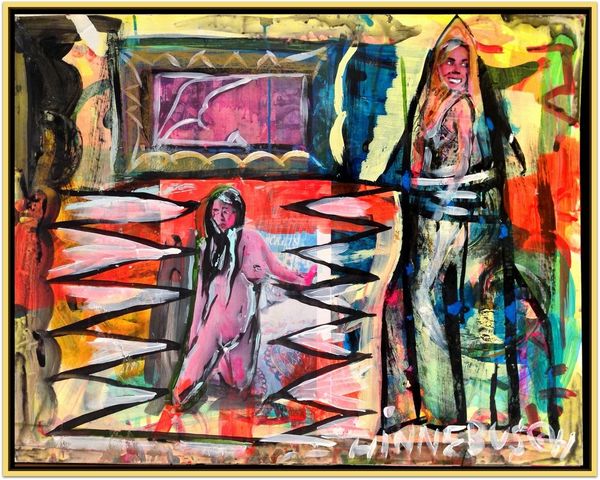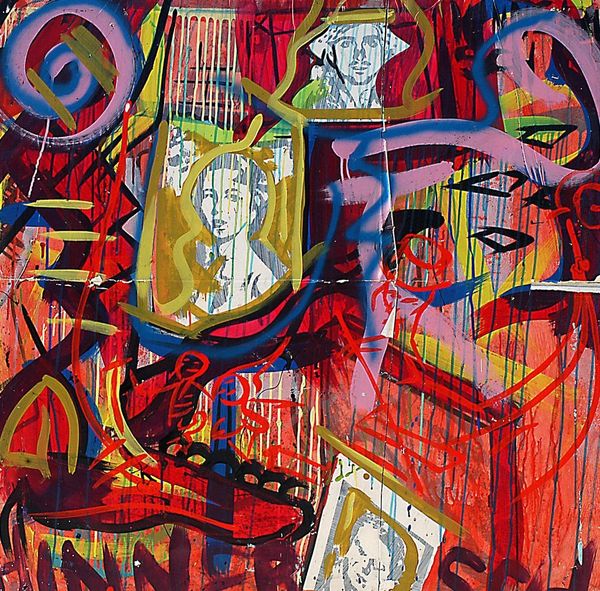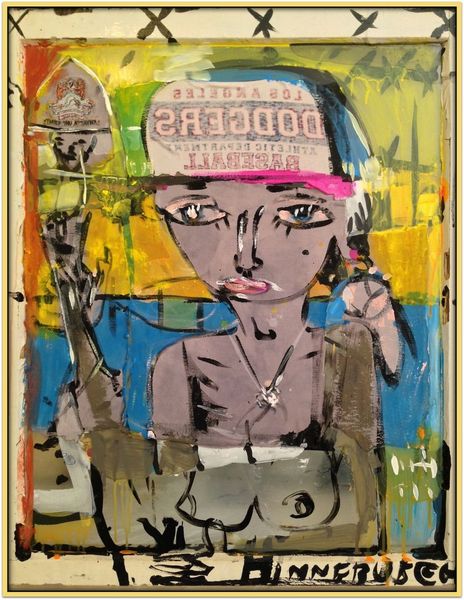
Copyright: Alberto Gironella,Fair Use
Curator: This artwork, "Carmen," was created by Alberto Gironella in 1987 using mixed-media: a dynamic interplay of print, collage and acrylic paint. It offers such an intriguing surface! Editor: Yes, my immediate response is one of theatricality, perhaps even bordering on melodrama. There's a fragmented, almost cinematic quality in its arrangement and framing devices that give this impression. Curator: It's precisely those fragments that interest me most. Note how Gironella orchestrates fields of printed collage amidst painted passages; he directs the viewer's eye with an adroit manipulation of the picture plane. It's all about the composition's internal relationships, isn't it? Editor: But we can't divorce the composition from the narratives being referenced. "Carmen", of course, brings to mind Bizet's opera, but also the broader historical fascination with the exotic "Spanish" woman, so often represented as dangerously seductive or volatile. The Spanish flag alongside the portrait… isn't Gironella positioning his Carmen within these orientalist tropes? Curator: It may certainly allude to such stereotypes, but more importantly, I see a dance between representation and abstraction, presence and absence. The very materiality speaks to the inherent artificiality of all images, and ultimately the image's "truth." It’s deconstruction rather than endorsement, I would argue. Editor: I think your "deconstruction" minimizes the very real ways in which cultural fantasies imprint on our imaginations, and on real lives. Also the inclusion of a cigarette package of a certain Gitanes brand references France... this could allude to some issues of cultural and political contexts. And speaking of the fragments you praised so much, these disparate cultural and signifiers can also hint to complex, contradictory nature of identity and representation. The cigarette acts like a clue of seduction and self-possession for women that at this time begin to emerge. Curator: I appreciate your nuanced reading, and your emphasis on such contexts is well-placed, especially in the latter half of the 20th century. I just believe that through the semiotic lens Gironella encourages one to examine the mechanisms of artistic production more than identity. Editor: The work’s artifice forces one to reflect not just on Gironella's intention but also on one’s own process of decoding and interpreting such loaded imagery and visual clues. Curator: Yes, this prompts the necessity for visual and structural literacy of decoding "Carmen."
Comments
No comments
Be the first to comment and join the conversation on the ultimate creative platform.
